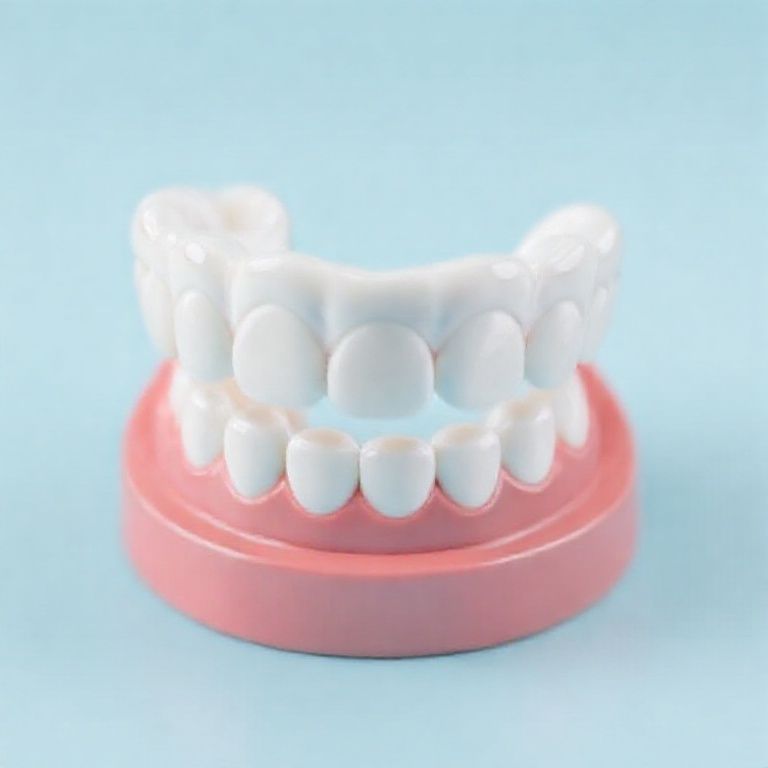Navigating the 3 unit bridge cost with insurance: Understanding Insurance Coverage and Out-of-Pocket Expenses
A radiant smile is often considered a gateway to confidence and well-being. Yet, missing teeth can significantly impact not only aesthetics but also functionality when it comes to chewing and speaking. Fortunately, dental bridges offer a reliable and long-lasting solution to restore your complete smile and oral health. However, navigating the financial aspects of this dental procedure, particularly with insurance considerations, can feel overwhelming. This comprehensive guide delves into the intricacies of 3 unit bridge cost with insurance, explores various insurance coverage options, and empowers you to make informed decisions for your dental care journey.
The Brilliance of Dental Bridges: A Bridge Between Missing Teeth

A dental bridge is a custom-made restoration designed to replace one or more missing teeth. It consists of two or more dental crowns (caps) placed on the healthy teeth flanking the gap and a pontic (artificial tooth) in between, literally bridging the space left by the missing teeth. Bridges are anchored to the abutment teeth, restoring functionality, preventing adjacent teeth from shifting, and enhancing your smile’s aesthetics. 3-unit bridges are the most common type, replacing a single missing tooth with two crowns and a pontic.
Understanding the Cost Factors: A Breakdown of the Bridge’s Value
The cost of a 3-unit dental bridge can vary considerably depending on several factors. Here’s a closer look at the key elements that influence the price tag:
- Materials: The type of materials used for the crowns and pontic significantly impacts the cost. Traditional bridges often utilize porcelain fused to metal (PFM), offering a balance of durability and aesthetics. However, zirconia crowns provide a more natural-looking, translucent finish but come at a premium. Additionally, the material used for the pontic, such as gold or high-strength composite resin, can influence the overall price.
- Location: Geographic location plays a role in determining the cost. Dental practices in areas with a higher cost of living often have higher fees compared to rural locations.
- Dentist’s Expertise: The skill and experience of the dentist can influence the cost. Renowned dentists with extensive experience in bridgework may charge more than those with less experience.
- Complexity of the Case: The overall condition of your teeth and the complexity of the procedure can affect the cost. For example, if additional procedures like root canals or gum surgery are required before placing the bridge, the overall cost will increase.
- Dental Lab Fees: The dental lab that fabricates the bridge will have its associated fees, which can vary depending on their location and expertise.
The Role of Dental Insurance: Bridging the Financial Gap
Dental insurance plays a crucial role in mitigating the financial burden of a 3-unit bridge. However, it’s essential to understand the specifics of your dental plan. Here’s what you need to know:
- Coverage for Bridges: Most dental insurance plans cover some portion of the cost for bridges, typically categorized as a major restorative procedure. The exact coverage percentage varies widely depending on your specific plan.
- Annual Maximums: Dental plans often have annual maximums, which represent the total amount the insurance company will pay for covered services in a year. This maximum could limit the amount of coverage you receive for your bridge.
- Deductibles: You may have a deductible associated with your dental plan, which is the amount you’ll need to pay upfront before your insurance kicks in.
- In-Network vs. Out-of-Network: Many dental plans offer greater coverage for procedures performed by dentists within their network. Opting for an in-network dentist can significantly reduce your out-of-pocket expenses.
Navigating Insurance Coverage: Demystifying the Details
To maximize your insurance coverage for a 3-unit bridge, consider these steps:
- Review Your Dental Plan: Carefully examine your dental plan’s explanation of benefits (EOB) or contact your insurance provider to understand your specific coverage for bridges. This includes details like coverage percentages, annual maximums, deductibles, and in-network/out-of-network benefits.
- Pre-Treatment Consultation: Schedule a consultation with your dentist to discuss the bridge procedure and obtain a pre-treatment estimate. This estimate will outline the expected cost and how much your insurance is likely to cover. This allows for informed decision-making before proceeding with the treatment.
- In-Network Advantage: Whenever possible, choose a dentist within your insurance network to potentially benefit from higher coverage rates and potentially lower out-of-pocket costs.
3 unit bridge cost with insurance
| Factor | Cost Range | Description |
|---|---|---|
| Materials | ||
| * Porcelain Fused to Metal (PFM) Crowns | $800 – $1,200 per crown | PFM crowns are a widely used option offering a good balance of durability and aesthetics. |
| * Zirconia Crowns | $1,200 – $1,500 per crown | Zirconia crowns provide a more natural, translucent appearance but are typically more expensive. |
| * Pontic Material | $200 – $500 | The cost of the pontic can vary depending on the material used, such as gold or high-strength composite resin. |
| Location | Variable | Dental practices in areas with a higher cost of living may have higher fees. |
| Dentist’s Expertise | Variable | Renowned dentists with extensive experience may charge more. |
| Complexity of the Case | Variable | Additional procedures like root canals or gum surgery can increase the cost. |
| Dental Lab Fees | Variable | Costs can vary depending on the lab’s location and expertise. |
| Total Cost (Uninsured) | $5,000 – $10,000+ | This is a broad estimate based on the factors above. The actual cost can be higher or lower. |
| Insurance Coverage (Example) | ||
| * Coverage Percentage | 50% | This is an example, and your specific coverage may vary. |
| * Annual Maximum | $2,000 | This is an example, and your specific annual maximum may vary. |
| * Deductible | $100 | This is an example, and your specific deductible may vary. |
| * Out-of-Pocket Cost (Example)** | $2,900 – $5,900+ | This considers the 50% coverage, $100 deductible, and excludes potential lab fee variations. Remember, this is an example, and your actual cost may differ. |
Financing Options: Bridging the Gap When Needed
Even with insurance, some patients may require additional financial assistance to cover the cost of a 3-unit bridge. Here are some financing options to consider:
- CareCredit or Similar Medical Credit Cards: These credit cards offer special financing terms specifically for medical and dental procedures.
- Dental Payment Plans: Many dental practices offer in-house payment plans, allowing you to spread the cost of your treatment over several months.
- Personal Loans: You may consider a personal loan from a bank or credit union to cover the cost of the bridge. However, be mindful of interest rates and repayment terms.
Conclusion
Understanding the cost factors associated with a 3-unit dental bridge and navigating your dental insurance coverage are crucial steps in making informed decisions about your oral health. By carefully considering the materials, location, dentist’s expertise, and potential complexities, you can get a clearer picture of the total cost. Furthermore, maximizing your insurance benefits and exploring financing options if needed can help make this essential dental procedure more accessible. Remember, consulting with your dentist and reviewing your dental plan details are essential for creating a personalized treatment plan that fits your budget and dental needs.
FAQs
- How long does a 3-unit dental bridge last? With proper care, a 3-unit dental bridge can last for 7-15 years or even longer.
- What are the alternatives to a 3-unit dental bridge? Depending on the situation, dental implants or partial dentures may be alternative options. Discuss these possibilities with your dentist to determine the best solution for your specific needs.
- How can I care for my 3-unit dental bridge? Maintain good oral hygiene by brushing twice daily, flossing regularly, and attending regular dental checkups and cleanings.
Remember, this information is for general knowledge only and should not be a substitute for professional dental advice. Always consult with your dentist to discuss your specific situation and treatment options.
You might also want to check out these articles for more ideas: Unveiling the dental bridge cost in georgia


